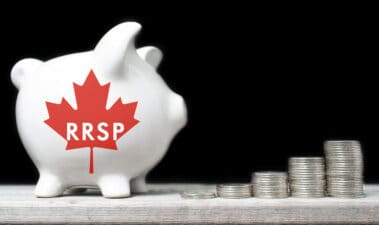Many Canadians continue to use the Registered Retirement Savings Plan (RRSP) to save towards retirement. However, many also use it in quite a haphazard way. They make contributions here and there, and this can lead to a big problem: missing the RRSP deadline.
The RRSP deadline came and went on March 1. Let’s figure out a way to make a plan for the upcoming year and never miss that deadline again.
Start out with a goal
Before you even start contributing what you can to your RRSP, make sure to have a goal in mind. That goal is going to be what you need in order to retire comfortably in the next few years or decades. This can be done by meeting with your financial advisor and should be revisited at least every few years.
One thing you’ll discover is that you also can’t just put a huge chunk away. The RRSP also has a contribution limit, which you can find online through the Canada Revenue Agency (CRA) My Account.
After you’ve discussed your goals and how much you’re able to contribute each year, then it’s onto the next part of the plan.
Make it automatic
If you really want your RRSP to grow, you need to create automated contributions. This should be done with any investment really, but with the RRSP, it’s incredible what compounding can do. You can contribute automatically to a stock or exchange-traded fund (ETF) or whatever of your choice on a monthly, bi-weekly, or anything-else basis.
This not only allows you to make sure you’re not missing any deadlines; you’re also treating these contributions like bill payments. And that’s what they should be considered. Retirement is a goal, but it’s not a vacation or new car; it’s your life. You need to plan for it as seriously as you would your rent.
Find the right investment
Finally, there are a few options I’d consider if you’re going to invest in an RRSP. All of them need to be long-term holds, even if you’re already nearing retirement. Just because you’re near it doesn’t mean you suddenly plan on using it all up in the next few years. If you retire at 60 and live until 80, that’s 20 years you need to plan for!
With that in mind, I would consider creating an RRSP portfolio involving ETFs like Vanguard S&P 500 Index ETF (TSX:VFV) and iShares Diversified Monthly Income ETF (TSX:XTR). Also, I’d consider a Big Six Bank like Canadian Imperial Bank of Commerce (TSX:CM).
VFV is a great choice because you have access to a percentage of all the companies on the S&P 500. Therefore, it’s like creating a diversified portfolio with the click of a button! Similarly, the XTR ETF gives you access to companies that provide passive income and dishes it out monthly. Again, one click, and you’ll have a diversified passive-income portfolio.
But if you want some extra growth, then CIBC stock provides that. You can look forward to a recovery from the current downturn, and a dividend yield at 5.45% as of writing. The banks have provisions for loan losses during downturns, so you could see a big jump when the market recovers.
Bottom line
Your RRSP contributions are important, so don’t miss that deadline again! Instead, contribute towards your goal on an automatic basis. By doing so, you’ll have set yourself up safely for life beyond work.







